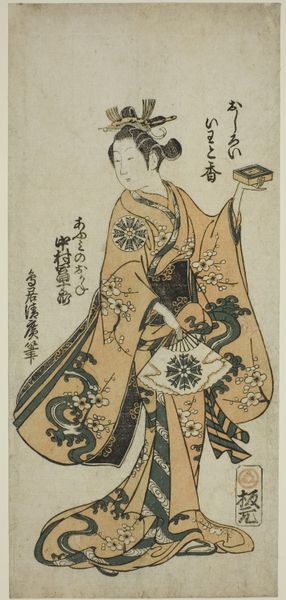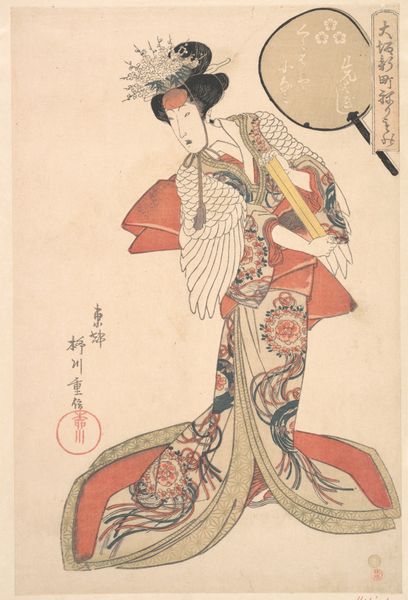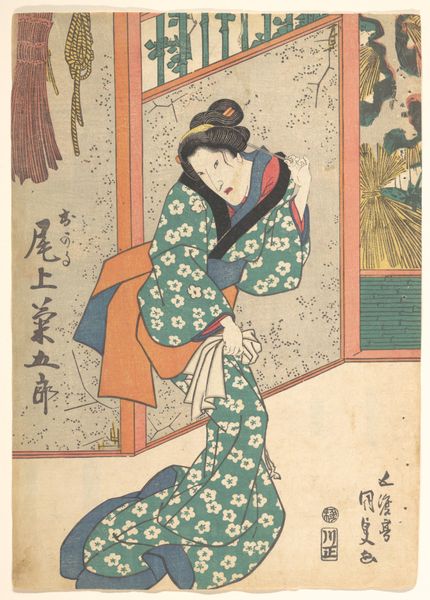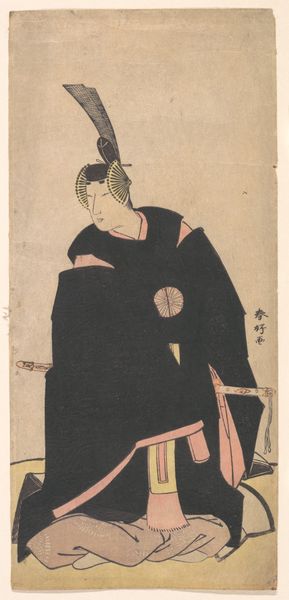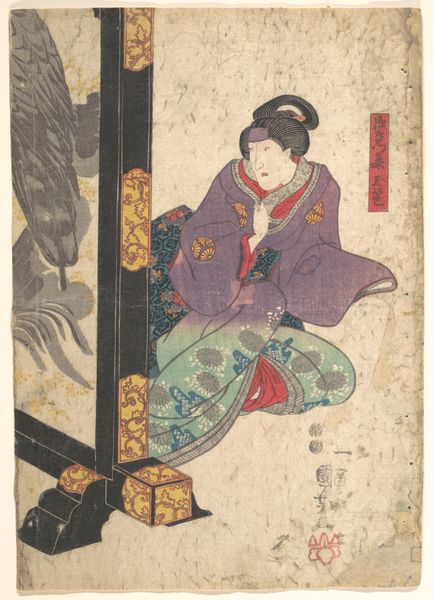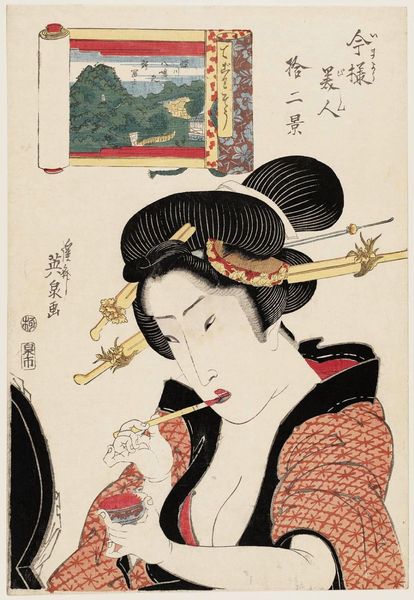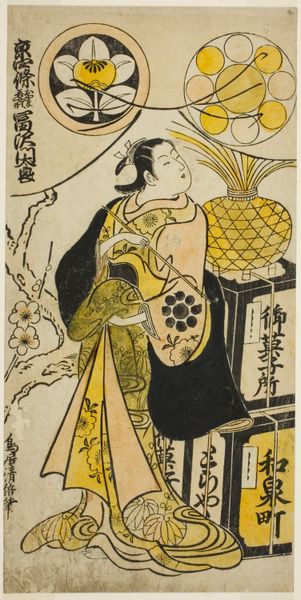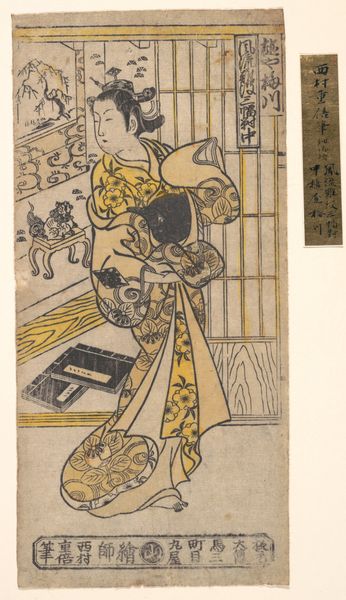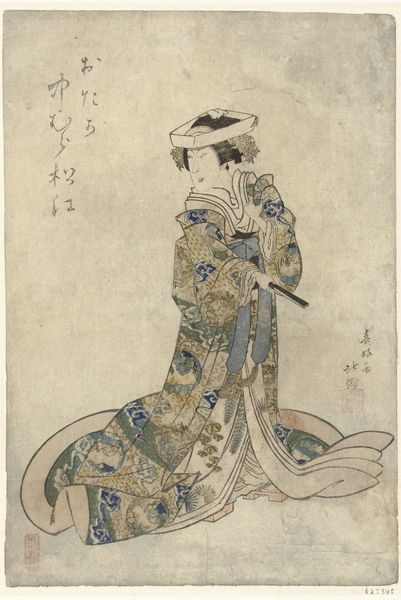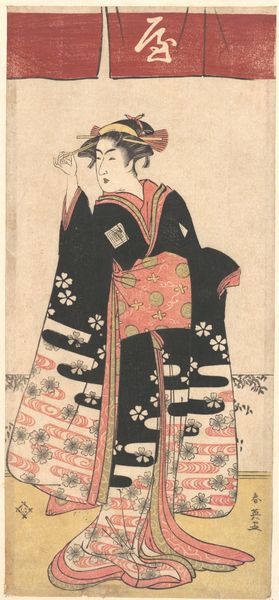
The Courtesan Takikawa of Ogiya, from the series Seven Beautiful Komachi (Bijin nana Komachi) c. 1615 - 1868
0:00
0:00
#
portrait
# print
#
asian-art
#
ukiyo-e
#
figuration
Dimensions: 37.5 × 24.4 cm (14 3/4 × 9 5/8 in.)
Copyright: Public Domain
Utagawa Toyokuni I created this woodblock print, "The Courtesan Takikawa of Ogiya," in Japan. It's part of a series connecting beautiful women to the poetess Komachi. But what's the social context here? In Japan's Edo period, courtesans like Takikawa were celebrities, fashion icons, and entertainers. They inhabited a floating world that existed outside the rigid social norms of the time. Toyokuni, as a member of the Utagawa school, produced art for the masses. His prints were not high art, they were popular culture. The print is full of visual codes: the elaborate kimono, the stylized hair, and the elegant pose all speak to Takikawa's status. She is shown to be an admired woman, as signified by the reference to the poetess. But was it progressive or conservative? Perhaps both. It celebrated female beauty and talent but within the confines of a male-dominated society. To understand this print fully, we need to look at the history of the pleasure districts, the economics of printmaking, and the role of women in Edo society. Art history isn't just about aesthetics; it's about understanding the complex social forces that shape artistic production.
Comments
No comments
Be the first to comment and join the conversation on the ultimate creative platform.




